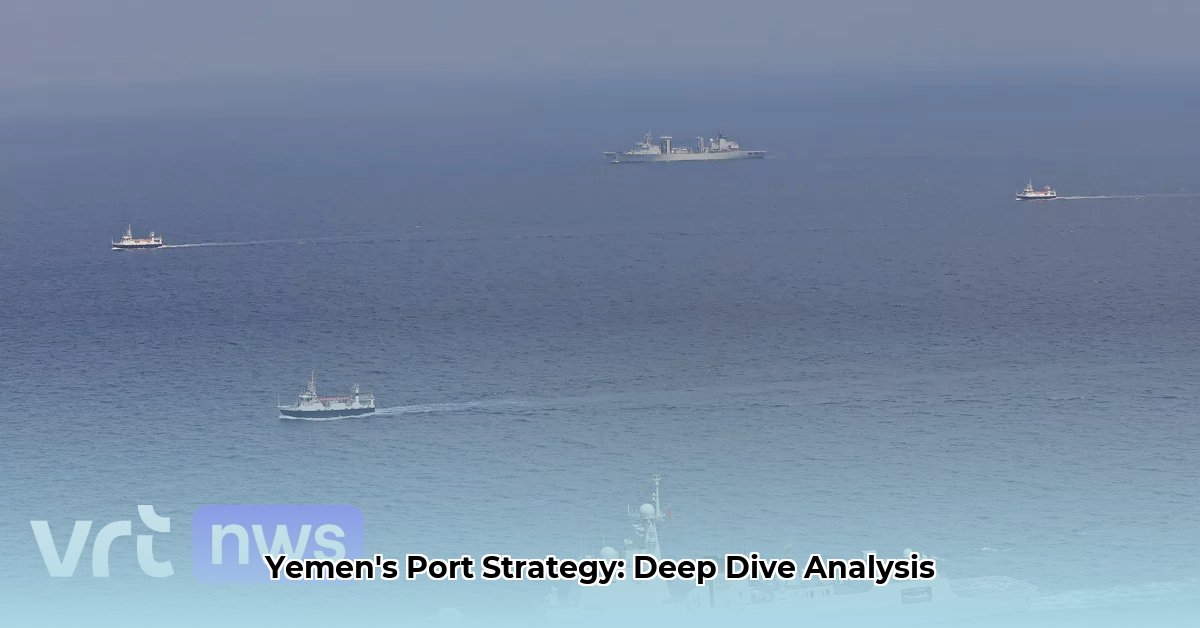
Aden's Port: From Ancient Spice Route to Modern Lifeline
Imagine a bustling port, a heartbeat of trade for centuries, now struggling to survive amidst the turmoil of war. That's the Port of Aden in Yemen, a place where ancient history meets brutal modern reality. For generations, Aden has been a vital crossroads, a gateway between East and West, its waters carrying the scent of frankincense and myrrh, echoing with the sounds of thriving commerce. But today, the sounds of conflict drown out the hum of prosperity. This article explores Aden's past glories, its present struggles, and the crucial path toward its future revival. It's not just about shipping containers; it's about the lives and livelihoods of the Yemeni people who depend on this vital port.
Aden's Modern Struggle: A Port Under Siege
The ongoing conflict in Yemen has relentlessly battered Aden's port, leaving its infrastructure scarred, its workforce strained, and its future uncertain. Once a symbol of economic prosperity, it now faces the harsh realities of war. Security concerns are paramount; the port's very existence is threatened by the constant risk of attacks, hindering the flow of essential goods and humanitarian aid. Doesn't this highlight the desperate need for a comprehensive solution, one that guarantees the safety and security of the port and its workers? The current situation represents not only economic hardship but also a humanitarian crisis. Thousands of people directly rely on the port, from dockworkers to shopkeepers, their lives irrevocably intertwined with its fate.
Aden's Economic Impact: A Nation's Lifeline
Prior to the conflict, Aden's port contributed significantly to Yemen's GDP, forming a crucial cornerstone of the nation's economy. Today, its diminished capacity reflects the broader economic struggles faced by the country. But restoring Aden’s functionality isn’t merely an economic imperative; it's a matter of survival for millions. Professor Omar al-Haj, Chair of Economics, Sana'a University, emphasizes that, "Reviving the Port of Aden is indispensable for Yemen's economic recovery. It's the keystone to unlocking the potential for broader growth and alleviating widespread poverty." The port remains a critical entry point for humanitarian aid, fueling survival in a nation grappling with famine and displacement. The rebuilding of Aden's port is a story of hope amidst despair, a potential springboard to national recovery.
Geopolitical Implications: A Strategic Crossroads
The fight for Aden’s port is not just a local conflict; it’s a reflection of wider geopolitical tensions. Its strategic location at the mouth of the Red Sea makes it a highly coveted asset, influencing the power dynamics of the entire region. Control over Aden’s port provides access to vital maritime trade routes and impacts regional stability. This complex situation isn’t just about trade; it’s about power, influence, and the future of a volatile region. Is this a situation that requires greater international intervention to safeguard the port from further conflict and ensure stable trade routes? The answer lies in collaborative effort and international cooperation.
Charting a Course for Recovery: A Multi-pronged Strategy
Reviving Aden's port requires a comprehensive, multi-phased approach addressing multiple, interconnected challenges:
Prioritizing Security: Establishing lasting peace and security is non-negotiable. This involves strengthening maritime security measures, bolstering physical defenses against attacks and creating a safe environment for workers and businesses. Without this, all other efforts are futile.
Modernizing Infrastructure: Investment in modernizing the port’s infrastructure is crucial to increase efficiency and attract investment. This includes upgrades to cranes, warehousing facilities, technology, and ensuring reliable power supply and efficient transportation networks. Did you know that the successful refurbishment of Sheds One and Two under the UNDP project has already increased storage capacity and improved operational speed?
Boosting Economic Growth: Aden's recovery requires broad economic diversification beyond the port. This means investing in local businesses, attracting foreign investment, and building a sustainable economic ecosystem that isn't singularly dependent upon the port’s fortunes.
Strengthening International Collaboration: Collaboration between Yemen, international organizations, and other nations is vital. This includes securing funding, providing technical expertise, sharing best practices, and resolving outstanding conflicts. This concerted collaboration will be the key towards restoring the port to its former status.
Key Players in Aden's Revival
Many stakeholders are integral to Aden's resurgence. Their collaborative efforts are essential components in the port's revitalization and the nation's wider economic recovery:
| Stakeholder | Role | Contribution |
|---|---|---|
| Yemeni Government | Lead the restoration process; ensure security; facilitate investments | Develop a comprehensive plan, manage resources, and oversee the reconstruction process. |
| International Community | Provide financial aid, technical assistance, and conflict resolution support | Support infrastructural development, training, and security improvements; foster peace and stability |
| Private Sector | Invest in infrastructure, port operations, and create job opportunities | Contribute to modernization, ensuring operational efficiency and attracting further investment. |
| Local Communities | Participate in rebuilding efforts, focus on sustainable development | Ensure their voices are heard, and contribute to the development of sustainable local communities |
The road to recovery for Aden’s port is long and arduous. Yet, its strategic importance and historic significance remain undeniable. Reviving this vital hub is not only crucial for Yemen's economic and social fabric but also for stability in the entire Red Sea region. A concerted and collaborative effort will be the key to unlocking Aden's potential and securing a brighter future for the people of Yemen.